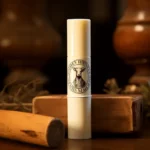Crafting your own honey soap allows you to customize the formulation according to your preferences and skin’s needs. In the next sections of this guide, we will provide you with detailed instructions on how to create your own batch of honey soap, ensuring that you have complete control over the ingredients and their quantities. From gathering the necessary materials to understanding the intricate soap-making process, we will guide you every step of the way, making the journey seamless and enjoyable.
Benefits of Honey Soap
Honey soap is not just a delightful addition to your skincare routine; it also offers a plethora of benefits that can transform your skin. Let’s explore the remarkable advantages of incorporating honey soap into your daily regimen:
1. Moisturizing Properties of Honey Soap
One of the standout benefits of honey soap lies in its exceptional moisturizing properties. Honey acts as a natural humectant, drawing moisture from the environment and locking it into the skin. As a result, honey soap helps to hydrate and nourish the skin, leaving it soft, supple, and rejuvenated. This makes honey soap an ideal choice for individuals with dry or sensitive skin, as it can provide much-needed relief from dryness, itchiness, and irritation.
Moreover, honey soap helps to strengthen the skin’s natural barrier, preventing moisture loss and maintaining optimal hydration levels. By incorporating honey soap into your skincare routine, you can bid farewell to dry patches and welcome a complexion that radiates with health and vitality.
2. Antibacterial and Antifungal Properties
Honey has been revered for its antibacterial and antifungal properties for centuries. When used in soap, these properties are amplified, making honey soap an effective tool in combating bacteria and fungi that can lead to various skin issues.
Acne-prone individuals can particularly benefit from the antibacterial properties of honey soap. It helps to eliminate acne-causing bacteria, reduce inflammation, and prevent future breakouts. By consistently using honey soap as part of your cleansing routine, you can achieve a clearer and smoother complexion.
Additionally, honey soap is known to assist in treating other skin infections, such as fungal infections or minor cuts and wounds. The antimicrobial properties of honey help to soothe and heal the skin, promoting faster recovery and minimizing the risk of complications.
3. Natural Exfoliation and Skin Renewal
Exfoliation is a crucial step in any skincare routine, and honey soap offers a gentle and natural way to achieve it. The enzymes present in honey work as a natural exfoliant, helping to remove dead skin cells and unclog pores. This process reveals a fresh layer of skin, promoting a more radiant and youthful complexion.
Regular exfoliation with honey soap can also help reduce the appearance of scars, blemishes, and hyperpigmentation. By sloughing away dead skin cells, honey soap aids in the skin’s natural renewal process, allowing healthier skin cells to come to the surface. This results in a smoother and more even-toned complexion, giving you the confidence to embrace your natural beauty.
4. Soothing and Calming Effects
For those with sensitive or irritated skin, honey soap provides a gentle and soothing solution. The natural anti-inflammatory properties of honey help to calm redness, reduce irritation, and alleviate discomfort associated with skin conditions like eczema or psoriasis.
Honey soap’s ability to soothe the skin makes it suitable for all skin types, including those with sensitive skin. Its gentle formulation ensures that your skin receives the care it deserves without any harsh side effects or further irritation. Incorporating honey soap into your skincare routine can help restore balance to your skin, leaving it feeling calm, nourished, and revitalized.
5. Rich in Antioxidants for Youthful Skin
Honey is a natural source of antioxidants, which play a vital role in maintaining healthy and youthful-looking skin. Antioxidants help neutralize free radicals, which are unstable molecules that contribute to premature aging and skin damage. By incorporating honey soap into your skincare routine, you are providing your skin with a powerful defense against these harmful free radicals, helping to reduce the appearance of fine lines, wrinkles, and age spots.
The antioxidants present in honey soap also help to promote a more even skin tone, leaving your complexion looking brighter and more radiant. With regular use, honey soap can help you achieve a youthful and revitalized appearance, allowing your skin to shine with a natural glow.
Incorporating honey soap into your skincare routine can unlock a world of benefits for your skin. From its moisturizing and healing properties to its ability to promote skin renewal and soothe irritation, honey soap is a true powerhouse in the realm of natural skincare. By embracing the magic of honey soap, you can elevate your self-care routine and indulge in the luxurious goodness that nature has to offer.
Detailed Instructions for Making Honey Soap
Creating your own batch of honey soap allows you to tailor the formulation to your preferences and skincare needs. With the right ingredients and equipment, you can embark on a fulfilling soap-making adventure. Follow these step-by-step instructions to craft your very own honey soap:
Gathering the Necessary Ingredients and Equipment
Before diving into the soap-making process, it’s essential to gather all the necessary ingredients and equipment. Here’s what you’ll need:
- Oils and Fats: Choose a combination of oils and fats that suit your skin type and desired soap properties. Popular choices include olive oil, coconut oil, shea butter, cocoa butter, and avocado oil. Each oil brings its unique benefits, such as moisturizing properties or a rich lather.
- Lye: Sodium hydroxide (NaOH) or potassium hydroxide (KOH) is needed to saponify the oils and fats, turning them into soap. Ensure that you purchase food-grade lye specifically meant for soap making.
- Water: Distilled water is recommended for soap making, as it is free from impurities that could affect the soap’s quality.
- Honey: Select high-quality honey to incorporate into your soap. The amount of honey will depend on your preference and the desired properties of your soap.
- Optional Additives: You may choose to enhance your honey soap with additional ingredients such as essential oils for fragrance, botanical extracts for added benefits, or natural colorants for visual appeal.
- Equipment: Gather the necessary equipment, including a digital scale for accurate measurements, heat-resistant containers for mixing, a stick blender for blending the ingredients, a thermometer to monitor temperatures, and soap molds to shape the final product.
Detailed Amount of Ingredients for Honey Soap
Creating a successful batch of honey soap requires precise measurements and an understanding of ingredient ratios. Let’s explore the detailed amounts of ingredients needed to ensure the perfect balance in your honey soap recipes:
Measurement Conversions and Equivalents
To accurately measure the ingredients for your honey soap, it’s important to understand measurement conversions and equivalents. Here are some common conversions to keep in mind:
- Ounces (oz) to grams (g): 1 oz is approximately equal to 28.35 g.
- Pounds (lb) to grams (g): 1 lb is equal to approximately 453.59 g.
- Fluid ounces (fl oz) to milliliters (ml): 1 fl oz is equal to approximately 29.57 ml.
- Teaspoons (tsp) to milliliters (ml): 1 tsp is equal to approximately 4.93 ml.
These conversions will help you accurately measure the ingredients for your honey soap, ensuring consistency and desired results.
Calculating the Amount of Lye and Water Based on Oils/Fats
The amount of lye and water needed in soap making depends on the specific oils and fats used in the recipe. To calculate the precise amount of lye and water, you need to consider the saponification values of the oils/fats. Saponification value refers to the amount of lye required to convert a specific oil or fat into soap.
Each oil or fat has its own unique saponification value, which can be found in reference charts or databases. By multiplying the weight of each oil or fat by its respective saponification value, you can determine the amount of lye needed. It’s important to use a reliable lye calculator or soap-making software to ensure accurate calculations.
Once you have the amount of lye, you can calculate the amount of water needed based on the lye concentration. A typical lye concentration for soap making is around 28-30%. Higher concentrations may result in a more caustic soap, while lower concentrations may lead to a softer soap.
Recommended Percentage of Honey in Soap Recipes
The percentage of honey in your soap recipe can vary based on personal preference and desired properties. As a general guideline, a recommended percentage of honey in soap recipes ranges from 5% to 10%. This percentage ensures that the honey contributes its beneficial properties without compromising the overall structure and stability of the soap.
Experimenting with different percentages of honey can help you achieve the desired level of moisturization and skin-nourishing benefits. Keep in mind that too much honey can affect the hardness and longevity of the soap, while too little may not provide the desired effects.
Optional Additives and Their Recommended Quantities
In addition to honey, you may choose to incorporate other optional additives into your honey soap recipe to enhance its properties and appeal. Here are some common optional additives and their recommended quantities:
- Essential Oils: Essential oils not only provide fragrance but also offer additional skincare benefits. The recommended amount is typically around 1-3% of the total soap batch weight. However, certain essential oils may have specific usage guidelines, so it’s important to consult reliable resources or usage guidelines provided by the manufacturer.
- Botanical Extracts: Botanical extracts, such as chamomile or calendula, can provide soothing and nourishing benefits to the skin. The recommended amount is usually around 1-5% of the total soap batch weight. Again, check the recommended usage guidelines for specific extracts to ensure proper incorporation.
- Natural Colorants: If you wish to add visual appeal to your honey soap, natural colorants like clays, herbal powders, or plant-based dyes can be used. The recommended quantity depends on the desired intensity of color, typically ranging from 1-3% of the total soap batch weight. It’s important to choose colorants that are skin-safe and suitable for soap making.
Remember to conduct a patch test or consult reliable resources to ensure the safety and compatibility of any additives you choose to incorporate into your honey soap.
By understanding the precise amounts of ingredients for your honey soap, you can create well-balanced and effective formulations that cater to your specific skincare needs and preferences.
Step-by-Step Soap Making Process
Once you have all the ingredients and equipment ready, it’s time to embark on the soap-making process. Follow these steps:
- Preparing the Lye Solution:
- Put on protective gear, including gloves and safety goggles, to ensure your safety while handling lye.
- In a well-ventilated area, carefully measure the required amount of lye using a digital scale.
- Slowly add the lye to the distilled water, stirring continuously until it dissolves completely.
- Allow the lye solution to cool down to the desired temperature.
- Melting and Combining Oils and Fats:
- In separate heat-resistant containers, measure and melt the oils and fats using gentle heat, such as a double boiler or microwave.
- Stir the oils and fats occasionally to ensure even melting.
- Once melted, remove from heat and let them cool to the desired temperature.
- Mixing Lye Solution and Oils/Fats:
- Check the temperature of both the lye solution and the oils/fats using a thermometer. They should be within a specific temperature range, usually around 100-110°F (38-43°C).
- Gradually pour the lye solution into the oils/fats, stirring continuously with a stick blender.
- Blend the mixture until it reaches trace, which is the point where the soap batter thickens and leaves a trail when drizzled back into the mixture.
- Adding Honey and Other Optional Ingredients:
- Once the soap batter reaches trace, add the desired amount of honey to the mixture.
- If using any optional additives, such as essential oils or botanical extracts, add them at this stage and blend thoroughly to incorporate them evenly into the soap batter.
- Pouring the Soap Mixture into Molds:
- Choose your desired soap molds, ensuring they are clean and ready for use.
- Carefully pour the soap batter into the molds, filling them to the desired level.
- Gently tap the molds on a flat surface to remove any air bubbles that may have formed.
- Allowing the Soap to Cure and Harden:
- Place the filled soap molds in a cool, dry area away from direct sunlight.
- Allow the soap to cure for approximately 4-6 weeks, during which time it will harden and the excess moisture will evaporate.
- After the curing period, gently remove the soap from the molds and store it in a well-ventilated area to continue drying and hardening.
Safety Precautions and Tips for Successful Soap Making
While making honey soap can be an enjoyable and rewarding experience, it’s important to adhere to safety precautions and follow best practices. Here are some essential tips to ensure a successful soap-making process:
- Always wear appropriate protective gear, including gloves and safety goggles, when handling lye.
- Work in a well-ventilated area to avoid inhaling any fumes that may be emitted during the soap-making process.
- Keep children and pets away from your workspace to prevent accidents.
- Use heat-resistant containers and utensils when working with hot oils, fats, and lye. Avoid using aluminum containers, as they can react with lye.
- Follow precise measurements and temperature guidelines to achieve the desired results.
- Keep a batch of vinegar or citric acid solution nearby to neutralize any lye spills or accidents.
- Clean and sanitize all equipment thoroughly before and after use to maintain hygiene.
- Patience is key – allow your soap to cure and harden properly to ensure the best quality and longevity.
By following these safety precautions and tips, you can enjoy a safe and successful soap-making experience while creating your own unique and luxurious honey soap.
Embrace the Magic of Honey Soap
As we conclude this comprehensive guide on honey soap, it is evident that this natural skincare gem offers a plethora of benefits for your skin. From its moisturizing properties and antibacterial prowess to its ability to promote exfoliation and soothe irritation, honey soap is a true gift from nature.
By incorporating honey soap into your skincare routine, you can experience the joy of indulging in a luxurious and nourishing cleansing experience. The moisturizing abilities of honey will leave your skin feeling hydrated and supple, while its antibacterial properties work to combat acne-causing bacteria and promote a clearer complexion. The gentle exfoliation provided by honey soap leads to a brighter and more youthful appearance, while its soothing effects calm and comfort even the most sensitive skin types.
Crafting your own batch of honey soap allows you to personalize the formulation and cater to your specific needs. By following the detailed instructions provided and using the precise amounts of ingredients, you can embark on a fulfilling soap-making adventure. Experiment with different oils, fats, and optional additives to create a honey soap that truly suits your skin’s requirements.
Incorporating honey soap into your daily routine is not only beneficial for your skin but also a delightful sensory experience. The sweet aroma and luxurious lather of honey soap will transform your cleansing ritual into a moment of self-care and indulgence.
So, why not embrace the magic of honey soap and unlock the potential for radiant, nourished, and rejuvenated skin? Begin your journey into the world of honey soap, and let its natural goodness transform your skincare routine. Enjoy the beauty and benefits that honey soap brings, and revel in the joy of nurturing your skin with nature’s golden elixir.
Remember, the possibilities with honey soap are endless. From gifting handmade soaps to loved ones to exploring different scent combinations and designs, you can continue to explore and expand your creativity with each batch you make. So, go ahead and immerse yourself in the world of honey soap—your skin will thank you.










